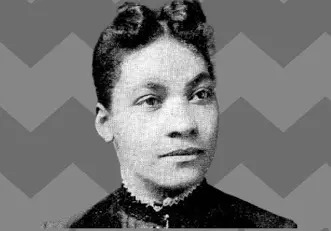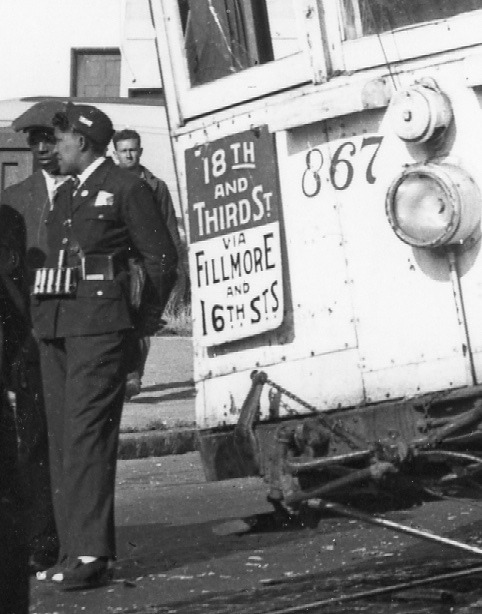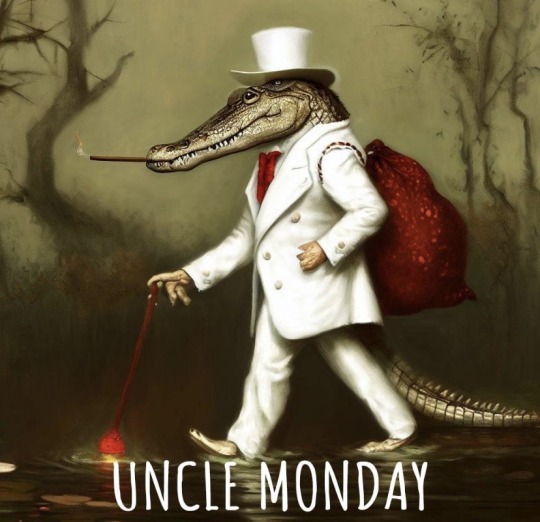Text

Happy Leap Day!
Wicked Subscribers a newsletter has hit your email today! I hope you enjoy it!
If you haven’t subscribed to be a Wicked Subscriber, I would love to have you!
Go to my website: www.tswickedwonders.com and scroll down the home page and subscribe Today!
0 notes
Note
I would like to know,can a Black woman be completely about her culture,and marry a white man?
In my opinion, yes we are the culture… We meaning all black people are the culture… when our ancestors were slaves and the white man was their “masters” that didn’t take away their culture… they brought the culture with them because it’s inside us… this is my opinion
0 notes
Text

Become a Vendor!
Join our online Marketplace Store
- Showcase and sell your products
- Earn 80% commission for every product sold through your vendor portal
You don't have to pay to sign up, It's FREE to sign up!
How to Become a Vendor?
You must become a site member or be a site member to access the Vendor Portal and then Sign in to your site member account and paste the vendor portal link: https://www.tswickedwonders.com/?vendorPortal=signUp into the search bar.
*The Vendor Portal sign-up button will usually be at the bottom of the page.
How to Become a Site Member?
You must visit our website: www.Tswickedwonders.com and log in and you will be prompted to sign up
#online marketplace#vendors wanted#vendors#sell online#crafter#small business#entrepreneur#craft market#etsyseller#marketplaces#marketplace#sell products online
0 notes
Text

Coffee Magick
Alchemists have long prepared special witchy blends, where coffee beans have roasted in rituals with sacred herbs only to empower the magical energy of the coffee.
You can utilize the magical properties of coffee beans in more ways than just your morning ritual and which way you stir your brew.
Coffee is great for:
•Divination: Coffee grounds can be read in the same way that tea leaves are read
•Blockage Removal: Burning coffee can ward of bad spirits, nightmares and any blockage you experience. Bathe with a coffee scrub, coffee bath, or drink a coffee potion to remove energy blockages in your life, aura, or body.
•Boosts Spell Power: Add coffee to your spells to help them manifest better and stronger.
•Chakra Booster: Bathe with a coffee scrub or in a coffee bath to empower your chakras. You can also meditate with a coffee bean rested on or near your throat chakra to help empower it.
•Curse Removal: add coffee to an uncrossing ritual bath
Dispels Ghosts: Make a floor wash from brewed coffee
•Hex Removal: Cleanse with coffee, brew coffee, practice coffee aromatherapy, or add coffee to your spells to break a curse.
•Luck: Brew coffee, pour it into your mug, and with a spoon, immediately scoop up and drink any bubbles that form on the surface.
•Nightmare Removal: Create a pouch filled with ground coffee beans and use it as an eye pillow to help remove nightmares.
•Scrying: Double or triple brew a dark blend and pour it in a black mug. Take it to a quiet, dark space and light a candle.
Coffee is also a lust amplifier and can be used in spells to enhance libido, sexual activity and sexual luck.
Coffee can be much more than a drink that gives you a kick of energy in the morning. The bean it self has magickal properties and it’s stored energy can also be a tool for you in your everyday practice.
How do you incorporate coffee into your practice?
#spiritual knowledge#coffee#spiritual warrior#spiritual practices#magick#hoodoo#metaphysical#alchemy of souls#spiritual alchemy#herbalism
1 note
·
View note
Text

Black History Month: Did you know?
Carter G. Woodson was a historian and founder of the Association for the Study of Negro Life and History, the Journal of Negro History, and “Negro History Week.” Now known as the “Father of Black History” because of his efforts to promote African American history, Woodson wrote pioneering social histories chronicling the lives of black people at a time when mainstream white scholars denied that African Americans were worthy of historical study.
Much of his work was based on public records, letters, speeches, folklore, and autobiographies, materials that were previously ignored. Woodson also used an interdisciplinary approach that combined anthropology, sociology, and history.
From 1915 until 1947, he published four monographs, five textbooks, five edited collections of documents, five sociological studies, and thirteen articles. He pioneered in interpretations of slavery and Africa, which were adopted by mainstream historical scholars late in the 1950s. Among the works for which he is best known is The Mis-Education of the Negro (1933), which is still in print seventy-five years later.
Read more: https://encyclopediavirginia.org/entries/woodson-carter-g-1875-1950/
Photo from encyclopediavirginia.org
#black excellence#black and proud#black americans#black history#black history month#black tumblr#african america history#african american history
0 notes
Text

Venus Love Spell
February 14th, 2024 Sun in Aquarius, Moon in Taurus (air, earth)
Whether you are a fan of Valentine's Day or not, today's energy is concentrated on love as so many people all over the planet are contemplating it today. This focuses the energy in the collective consciousness towards love, relationships and romance.
Create an altar to Venus with magical objects like rose quartz crystals, flowers, sea shells etc. You can always find associations and correspondences with a brief internet search. Be sure to include a printed image, statue or icon of Her.
Cast a circle and invoke Venus. Tell her your desires, and really feel what it will be like when your desires come true. Spend time visualizing you and your partner/love/spouse happily in love and feel it physically infuse your surroundings and your body. If you're already in a committed relationship, see your love grow and deepen.
Sense waves of magnetic energy radiate from you as you speak this incantation:
"My deepest love
I draw to me,
With honest heart And will that's free, May our love grow Exponentially, Such is my will, And so it will be."
When you feel complete, say thank you to Venus and close out sacred space.
0 notes
Text

Thank you @deceptivenewt and everyone who got me to 25 reblogs!

Black history: Did you know?
Phillis Wheatley was only 12 when she became the first female African American author published.
Despite Phyllis Wheatley’s fame, we know surprisingly little about her early life. She was taken from her home in Africa when she was seven or eight, and sold to the Wheatley family in Boston. The family taught her to read and write, and encouraged her to write poetry as soon as they witnessed her talent for it. In 1773, Phyllis published her first poem, making her the first African American to be published. She was only 12 at the time.
Read more: https://www.poetryfoundation.org/poets/phillis-wheatley
493 notes
·
View notes
Text

Black history: Did you know?
Phillis Wheatley was only 12 when she became the first female African American author published.
Despite Phyllis Wheatley’s fame, we know surprisingly little about her early life. She was taken from her home in Africa when she was seven or eight, and sold to the Wheatley family in Boston. The family taught her to read and write, and encouraged her to write poetry as soon as they witnessed her talent for it. In 1773, Phyllis published her first poem, making her the first African American to be published. She was only 12 at the time.
Read more: https://www.poetryfoundation.org/poets/phillis-wheatley
#black excellence#black and proud#black americans#black history#black woman#black history month#black tumblr#black women#african america history#african american history
493 notes
·
View notes
Text

Rebecca Lee Crumpler was the first Black woman to become a doctor of medicine in the United States.
After moving to Charlestown, Massachusetts in 1852, Rebecca Crumpler worked as a nurse for eight years. At that time, the lack of official schools of nursing meant she required no formal training for the job. But she certainly wasn't afraid of some hard work. She was admitted into the New England Female Medical College in 1860 and graduated four years later with her M.D.
After the end of the Civil War in 1865, Dr. Crumpler moved to Richmond, Virginia to provide medical care for the freed slaves who would otherwise have no one else to turn to. She dedicated herself to the understanding of diseases that particularly afflicted women and children, and when she eventually returned to Massachusetts, she opened her own clinic in Boston. She saw poverty stricken patients and treated them regardless of their ability to pay her.
Read more: https://www.nps.gov/people/dr-rebecca-lee-crumpler.htm
#black excellence#black history matters#black and proud#black americans#black history#black woman#black history month#black tumblr#black women#african america history#african american history
216 notes
·
View notes
Text

Black History: Did you know?
Maya Angelou was the first Black female cable car conductor in San Francisco.
Maya Angelou is best known as a Pulitzer Prize winning author, but before she began writing, she worked a string of odd jobs in her youth. When Angelou first went to apply for a job as a cable car conductor, they refused to give her an application. Undeterred, Angelou sat outside of the office every day for two weeks until they finally allowed her to apply for the position.
Much to her distress, when Angelou read over the application paperwork, she realized she was neither old enough for the job, nor did she have the desired experience and recommendations she was required to list. In I Know Why the Caged Bird Sings, Angelou describes how she combined fact and fiction in order to complete the application, and “on a blissful day” she was hired as the first Black female cable car conductor in San Francisco.
Read more: https://www.streetcar.org/maya-angelou-streetcar-conductor-the-full-story/
#black history matters#black excellence#black and proud#black americans#black history#black woman#black history month#black tumblr#black women#african america history#african american history
10 notes
·
View notes
Text

Black History Month: Did you know?
The three-light traffic signal was invented by a Black man named Garrett Morgan.
Garrett Morgan had only an elementary school education and was the son of a formerly enslaved man. Nevertheless, Morgan surmounted these difficulties and is responsible for many important inventions. Most notably, Morgan invented the three-light traffic signal in 1923.
While driving one day, Morgan witnessed a serious car crash at an intersection. This sparked his idea to add a third light to the traffic signal which would warn drivers of an impending red light. His patent was granted in 1924, and after early installments of the three-light traffic signal were successful, they spread throughout the country and became the three-light signal many of us encounter daily.
#black history matters#black excellence#black americans#black history#black history month#black tumblr#african america history#african american history
263 notes
·
View notes
Text
0 notes
Text

Uncle Monday is a powerful ancestral spirit that persists in southern Hoodoo lore. Uncle Monday is said to have been a medicine man of the shape-shifting variety who was brought to South Carolina with the slave trade. As the story goes, he escaped slavery and went to Florida to live among the Seminoles and the maroons, bringing his crocodile medicine with him.
A larger-than-lite figure in African American folklore, Uncle Monday is celebrated among Florida's Seminole and maroon communities. Hailing from Africa and brought to South Carolina through the harrowing transatlantic slave trade, Uncle Monday's story is one of daring escape and unwavering resilience.
Finding sanctuary among the Seminole and maroons in Florida, Uncle Monday's mystical prowess as a medicine man and hoodoo doctor shines through, with his most remarkable shapeshifting ability being the power to transform into an alligator at will! This incredible metamorphosis serves as a powerful symbol of defiance against oppression and the refusal to bow down to slavery's chains.
As the guardian of his community, Uncle Monday's legend pulses with themes of resistance, resilience, and cultural pride, inspiring generations with his indomitable spirit and unyielding courage.
references:
https://museumoffloridahistory.com/explore/collections/19th-20th-century-artifacts/art-and-ephemera/uncle-monday/
American Rootwork Association (ARA) Blog - American Rootwork Association
#african america history#african american history#african folklore#hoodoo#black history#black history month#spiritual knowledge#spiritual practices#folklore
5 notes
·
View notes
Text

Black History Month: African American history you probably weren't taught in school
Bessie Coleman was the first African American, and first Native American woman, to pilot an airplane.
When Bessie Coleman's brother came home from fighting in World War I with stories of female pilots in France, she knew that was what she wanted to do.
But aviation programs wouldn't accept her. She was a woman, an African American, and a Native American. So instead, Coleman took off to France.
She attended the Caudron Brothers' School of Aviation in Le Crotoy, and in 1921, she became the first African American, and Native American woman, to pilot an airplane. She became famous for her flight tricks, which included making figure-eight patterns in the sky. Coleman became widely popular and toured the US giving performances, lessons, and encouraging African American women to fly.
Read more: https://www.womenshistory.org/education-resources/biographies/bessie-coleman
Bessie Coleman. Wikimedia Commons/Public Domain
#black history matters#black excellence#black and proud#black americans#black history#black history month#black tumblr#african america history#african american history#black woman
3 notes
·
View notes
Text

Black History Month: African American history you probably weren't taught in school
Known as Tulsa's "Black Wall Street," the district of Greenwood was a self-reliant and highly affluent black community in the early 1900s.
Founded in 1906, the district of Greenwood in Oklahoma was developed on Native American territory and quickly became settled by Black Americans.
Oklahoma was seen as a sort of safe haven for Black Americans looking for work, and after the Civil War, over 50 Black townships were founded throughout the state.
Greenwood became one of the wealthiest Black communities in the US, and a number of Black-owned and operated businesses, restaurants, hotels, movie theaters, shops, banks, and hospitals were set up by entrepreneurs.
The community operated as a self-reliant area, and Black business owners would often pool together their resources to uplift others who wanted to start their own companies.
But during a period of horrific racial violence, members of the Ku Klux Klan attacked Greenwood and left hundreds of black people dead, and thousands of homes destroyed. This harrowing act of violence became known as the Tulsa Massacre of 1921.
Read more: https://www.history.com/news/black-wall-street-tulsa-race-massacre
The aftermath of the Tulsa Race Massacre, during which mobs of white residents attacked black residents and businesses of the Greenwood District in Tulsa, Oklahoma, on June 1921. Bettmann Archive/Getty Images
#black history matters#black excellence#black and proud#black americans#black history#black history month#black tumblr#african america history#african american history
3 notes
·
View notes
Text

Black History Month: African American history you probably weren't taught in school
Before Rosa Parks refused to give up her seat on the bus, a 15-year-old girl named Claudette Colvin did the same thing.
While the story of Rosa Parks refusing to give up her seat on the bus for a white person has become a defining moment in African American history, there were actually several Black women who did the same thing before her. One of those women was 15-year-old Claudette Colvin.
On the same bus system in Montgomery, Alabama, Colvin refused to give up her seat to a white passenger nine months before Rosa Parks did. She was escorted off the bus by two police officers, arrested, and hit with a fine. But she didn't stop there. Colvin then went on to be one of four women in the Browder v. Gayle court case, which ultimately overturned bus segregation laws in the state of Alabama.
Author Philip Hoose wrote a book about Colvin. Gordon Chibroski/Portland Press Herald/Getty Images
#black history matters#black excellence#black americans#black history#black history month#black tumblr#black and proud#african america history#african american history
1 note
·
View note
Text

Black History Month: African American history you probably weren't taught in school
Katherine Johnson was a mathematician for NASA whose work was critical to sending astronauts into orbit and landing a man on the moon.
Katherine Johnson was born in Sulphur Springs, West Virginia in 1918 and excelled in mathematics from a young age. After skipping several grades throughout primary school, Johnson attended West Virginia University, and was handpicked as one of three Black students — and the only Black woman — to attend WVU's graduate program.
In 1952 she began working for the National Advisory Committee for Aeronautics (NACA) which slowly transitioned into the program we know today as NASA. There, she worked on an investigation of a plane crash and analyzed date from flight tests.
When the Soviet Union launched the satellite Sputnik in 1957, Johnson transitioned into mathematics for space travel and became a part of the Space Task Force, which was the first official move into space exploration. Johnson co-authored a report laying out equations needed for orbital space flight and became the first woman credited as a research author for the team.
Johnson's orbital calculations became seminal, and she conducted, by hand, one of the final tests before successfully sending John Glenn into space. Following that success, Johnson's calculations were used to send a man to the moon, marking a historic moment in US space flight.
In 2015, President Barack Obama awarded Johnson the Presidential Medal of Freedom to honor her contributions, and she was the subject of the 2016 movie "Hidden Figures," which dramatized her work at the space agency.
Read more: https://www.nasa.gov/centers-and-facilities/langley/katherine-johnson-biography/
(Photo) Katherine Johnson. Wikimedia Commons
#black americans#black history matters#black pioneers#black excellence#black history#black history month#black tumblr#black and proud#african america history#african american history
4 notes
·
View notes